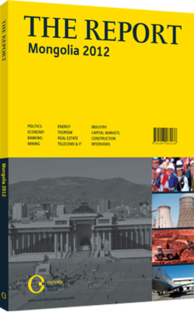Ghost town: The country’s first capital lives on in legend
Derelict factories, a small and muddy market and scattered concrete blocks amid gers (traditional tents), log cabins and rickety wooden stockades surround tiny residential districts. Today’s Kharkhorin isn’t a great deal to look at, though the surrounding snow-flecked hills and the unique, bright Mongolian light do invest it with some beauty. However, this was once the world’s most important capital, better known as Karakorum.
MONGOL CAPITAL: Karakorum’s light flickered briefly but brilliantly for just over four decades in the 13th century, when it was the administrative heart of the largest empire that the world had ever seen. It was never a big place, and it may not have been as imposing as the illustrious city that usurped it, Xanadu, immortalised in Coleridge’s fantasy Kubla Khan. But it was the first-ever capital of the Mongols, founded by Chinggis (Genghis), the Great Khan himself, and during its ascendancy, envoys from nations across the world trekked thousands of miles in missions to the Mongol court.
MULTICULTURAL CENTRE: While the Great Khan understood the need for a capital in his rapidly-established and sizeable empire, he seems to have had little affection for the place, preferring to be campaigning far away, and for the first decade and a half following its founding in 1220, Karakorum was little more than a ger settlement. However, under Chinggis’ successor, Ogedei, it truly became a city.
The most vivid surviving descriptions of Karakorum at its zenith come from the Dutch Franciscan missionary and explorer William of Rubruck and the Persian chronicler of the Mongols, Rashid Al-Din. They describe a tremendously bustling walled city with busy markets thronged with traders selling goods from around the known world. Ceramics, coins with Islamic inscriptions, and silk found at the site are testament both to the breadth of trade and the city’s wealth.
It was an exceptionally multicultural place, with inhabitants from across and beyond the empire. Muslims lived around two mosques and Christians near their church. The latter were predominantly of the Nestorian sect persecuted for centuries in Europe and the Levant but welcomed in the tolerant Mongol empire. Other faiths worshipped at temples, while the Mongols themselves refused to abandon their nomadic roots even in their capital, living in the ger quarter.
OGEDEI KHAN: Ogedei himself, however, did not live in a ger, but in a large and impressive palace in a walled compound fast against the city walls. Reconstructions suggest that the architecture was heavily influenced by that of China, with sweeping eaves and elegant pillars. For Rubruck, however, the most interesting feature was a spectacular fountain in the shape of a tree. The fountain was made of silver, and featured four lions at its base from which mare’s milk flowed. From four pipes shaped like serpents coiled around the tree and with their mouths at the very top poured wine, rice ale, airag (fermented mare’s milk) and mead. The whole structure was topped with an angel with a trumpet, and a trumpeter concealed within the trunk made it seem as if the angel was indeed playing music.
ECLIPSE & LEGACY: Karakorum’s brief flowering started to fade when Kublai Khan came to the throne in 1260. In 1271, Kublai founded the Yuan Dynasty with Xanadu as its capital, a direct successor to the empire founded by his grandfather Chinggis, but with its heart now south of the Mongol steppe heartland. Emissaries no longer beat a path to Karakorum, which became a regional trading centre. In 1388 it was finally razed by Ming Chinese troops, who left the city as rubble.
Karakorum was wiped from the map, but was never erased from memory. After 197 years in ruins, Abtai Sain Khan chose this as the site of the Erdene Zuu Monastery as he reintroduced Buddhism to Mongolia. Erdene Zuu is Mongolia’s oldest surviving Buddhist monastery. It stands on the site of Ogedei’s palace, and was constructed from the scattered remains of the city. Excavation on the site is ongoing, but for the time being the clearest remnant of the city is a large stone turtle, which is thought to have marked the city’s original boundary. However, the first capital lives on in Mongolian legend.
You have reached the limit of premium articles you can view for free.
Choose from the options below to purchase print or digital editions of our Reports. You can also purchase a website subscription giving you unlimited access to all of our Reports online for 12 months.
If you have already purchased this Report or have a website subscription, please login to continue.

